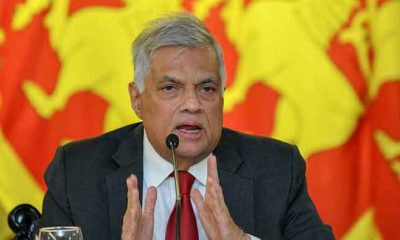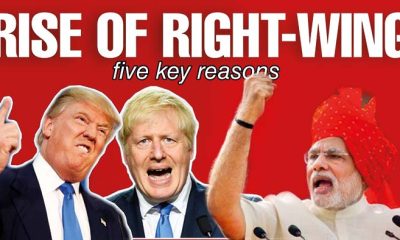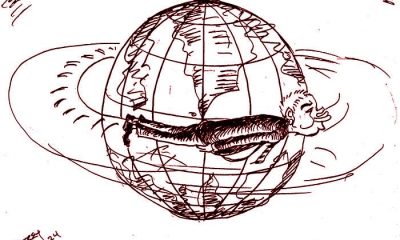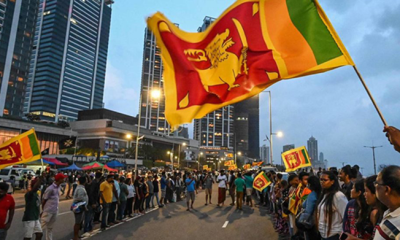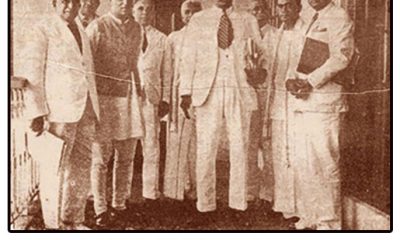Features
The failure of political leadership
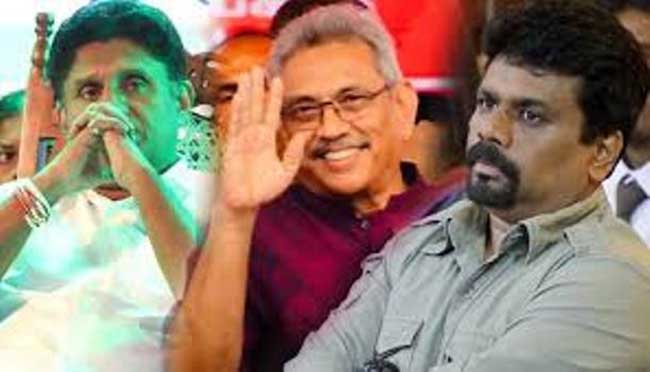
Dr. Nihal Jayawickrema
(Continued from last week)
If the health of the nation has been seriously compromised, it is principally due to the failure of its political leadership, all of whom represent, or have represented predominantly Sinhalese electorates. For them, the constituency is essentially Sinhalese in race, Buddhist in religion, and Mahawamsa in mindset. Under pressure from the Tamil political leadership or faced with the threat of satyagraha or civil disobedience campaigns, or occasionally when driven to seek the support of the Tamil members of parliament to form an administration, successive Sinhalese political parties have entered into formal or informal agreements with representatives of the Tamil people. These were rarely honoured. The responses were determined purely by political expediency.
For example, in 1957, the Bandaranaike – Chelvanayakam Pact provided for the establishment of Regional Councils and for the use of Tamil in the northern and eastern provinces. Nine months later, under pressure from the Eksath Bhikku Peramuna and from the UNP led by J.R. Jayewardene which organized a 72-mile march from Colombo to the Temple of the Tooth “to save the Sinhala race”, S.W.R.D. Bandaranaike announced that the pact which bore his signature as Prime Minister was incapable of being implemented.
In 1958, Mr Bandaranaike enacted the Tamil Language (Special Provisions) Act but failed in his lifetime to make the regulations which would have made that law operative. When in 1966, Dudley Senanayake attempted to make these regulations, Opposition parties led by Mrs Bandaranaike demonstrated against that move on the streets of Colombo and took an oath at the statue of Vihara Maha Devi to oppose the division of the country. Dudley Senanayake, fortified by a state of emergency, proceeded to make the regulations, but did not implement them in the remaining four years of his government.
In 1965, Dudley Senanayake signed an agreement with S.J.V. Chelvanayakam in which he promised to establish District Councils. A Bill for this purpose was prepared but was never introduced in Parliament. Meanwhile, a White Paper on the subject, promising less than what Mr Bandaranaike had offered in 1957, was publicly and ceremonially burnt on the steps of parliament building by members of the SLFP and other Opposition parties.
In 1970, Mrs Bandaranaike invited the Federal Party members to the Constituent Assembly to help draft a new constitution which would “serve to build a nation ever more strongly consciousness of its oneness amidst the diversity imposed upon it by history”. When they responded positively and suggested that that goal be reached through federalism, they were ruled out of order and left with no alternative but to withdraw from the exercise.
In 1977, the UNP manifesto promised to summon an All-Party Conference to consider the problems of non-Sinhala speaking people, but conveniently forgot that promise once the general election was won, and it took several years of terrorist activity and military reprisals, hundreds of deaths, the burning of the Jaffna public library, and the events of July 1983, to convince the government that that promise ought to be kept. When that All-Party Conference eventually met (but without the SLFP leader on whom civil disabilities had been imposed and expelled from parliament), the much-maligned Annexure C, which the Tamil political leadership claimed contained the agenda they had been invited to discuss, continued to lie on the table in the manner of an illegitimate child abandoned by its mother.
Meanwhile, the Sixth Amendment to the Constitution, which required all members of parliament to take a loyalty oath to an indivisible Sri Lanka, which the TULF refused to do, resulted in the moderate political wing of the Tamil community losing their political influence and becoming irrelevant in any negotiations. That, in brief and in outline, is a case study of the failure of political leadership.
HEALING THE NATION
Transitional justice
The problem of healing the nation today is two-fold. On the one hand, there is the issue of governance which our political leaders have failed to resolve for nearly 60 years. On the other hand, there is the issue of justice, reparation, and reconciliation, which has been brought to the fore through the actions of a succession of Presidents who set out to resolve a political and human rights problem, conveniently dubbed “the terrorist problem”, through the application of military firepower. It was President Jayewardene who, in October 1979, directed the Army Commander to proceed to the north with absolute authority to eliminate by any means whatsoever all forms of terrorism he may encounter; the final solution was to be achieved by Christmas of that year. For decades thereafter, a daily sacrificial offering was made of thousands of idealistic young Sinhalese men in the prime of their lives who journeyed to the north and the east in the confident hope that before they laid down their own lives, they would be able to kill a few equally idealistic young Tamil men and women, and thereby make this thrice blessed isle a safer, happier, and more righteous place for all of us to live in.
The poet John Donne reminds us that ‘No man is an island, entire of itself. Every man is piece of the continent, a part of the main’. How a nation treats its nationals is no longer a matter exclusively within its own concern. There are now norms and standards which form part of a growing body of international law. Therefore, a government’s behaviour towards its own nationals is now regulated by international treaties. In 1981, the Government of Sri Lanka brought itself within the jurisdiction of international human rights law when it subscribed to, and ratified, the two international human rights covenants.
Sri Lanka is believed to have one of the highest rates of reported cases of enforced disappearances in the world, and yet no tangible steps have been taken for several years even in respect of the much-publicised Ekneligoda disappearance. Over 300 political killings in 2005, and over 700 extra-judicial executions in the next two years have been recorded, with no action being taken to investigate them. The high-profile killings of Lakshman Kadirgamar in August 2005 in circumstances that are still classified and shrouded in mystery; of Joseph Pararajasingham at a Christmas Eve church service in Batticaloa in 2005; of five Tamil university students in Trincomalee in January 2006; of 17 ACF workers in Muttur in August 2006; and of Lasantha Wickrematunge within a high security zone in January 2009; have all remained uninvestigated or not effectively investigated. Some military personnel have been charged with the killing of Nadarajah Raviraj in Colombo in November 2006, but has it been ascertained why they committed that crime? The Rajapaksa Government clearly demonstrated that it lacked the will or the desire to hold persons who have perpetrated such serious crimes accountable for their actions. Even if the present Government wishes to reverse this culture of impunity, does it have at its disposal the expertise to successfully investigate several thousand cases of enforced disappearance and extra-judicial execution?
In 2015, the Human Rights Council published the findings of the investigation on Sri Lanka conducted by three distinguished legal experts, the former President of Finland, the former Governor-General of New Zealand and the former President of the Human Rights Commission of Pakistan. That commission had gathered information of unlawful killings of civilians by security forces and paramilitary groups; extrajudicial execution of identified LTTE cadres and unidentified individuals at the very end of the fighting, including those who were known to have surrendered to the Sri Lankan military; arbitrary arrests and abductions; enforced disappearances; torture and other forms of cruel, inhuman and degrading treatment; sexual and gender-based violence; forced recruitment of children for use in hostilities; denial of humanitarian assistance; and the deprivation of liberty of internally displaced persons.
The government has announced its intention to establish a Truth Commission, which is a healing process that offers victims and perpetrators an opportunity to outline details of past crimes. It is a mechanism that has been attempted, with some degree of success, in South Africa and in several Latin American countries such as Argentina, Chile, El Salvador and Guatemala. I once witnessed the proceedings of a truth commission in Nigeria. It is based on the Christian concept of confession. Whether it would be appropriate for Sri Lanka is an open question. The government is reportedly taking steps to provide restitution, compensation, and rehabilitation. However, a pre-condition for reconciliation is accountability. Without accountability, there can be no reconciliation in any society.
The UN High Commissioner for Human Rights recommended the establishment of a hybrid court which is a unique element in the human rights-based approach to transitional justice in a post-conflict situation. By including international judges, prosecutors, lawyers and investigators, a hybrid court is designed to deal with those who bear the greatest responsibility for serious crimes arising from or during the conflict, such as war crimes or crimes against humanity, including sexual crimes and crimes against children. President Sirisena has repeatedly asserted that, under no circumstances, will he agree to the participation of foreigners in the accountability process in Sri Lanka. He has claimed that Sri Lanka has an independent judiciary which is quite capable of addressing the issues of accountability without any foreign assistance. It is perhaps time that his advisers briefed him on the real position.
In many significant respects, the Sri Lankan legal and judicial system has, in the past few decades, failed its multi-ethnic and multi-religious population, and has demonstrated that it lacks the will and the capacity to address such serious crimes. War Crimes and Crimes against Humanity, as well as Enforced Disappearances, have not been criminalized in Sri Lanka. Neither the International Covenant on Civil and Political Rights (which the Jayewardene Government acceded to) and its Optional Protocol (which the Kumaratunge Government ratified), nor the International Covenant on Economic, Social and Cultural Rights, have yet been incorporated in our law. No effective mechanism has yet been established for the protection of witnesses and victims of crime. In 2006, Chief Justice Sarath Silva suspended the application to Sri Lanka of international human rights treaties, holding that their ratification was an infringement of the Constitution. His judgment was described by a world-renowned jurist as “an example of judicial waywardness” or “judicial eccentricity”. Another referred to it as “Alice in Wonderland reasoning”. Therefore, we lack the legal framework within which accountability can be established for such crimes. The process of remedying that deficiency may benefit from expertise, whether international or otherwise.
The judicial culture of the Supreme Court, especially evident in the past decade, has been one of extreme deference to the presidential executive. Whenever fundamental rights were invoked, the court, composed as it was of judges appointed by President Rajapaksa, often from among his contemporaries at Law College, would, more often than not, capitulate to executive assertions of state security. Political opponents of the previous government and members of ethnic minorities, and indeed civil society, have rarely, if ever, obtained any relief. The judgments of the Supreme Court, especially in matters affecting individual rights, reveal an astounding ignorance or unfamiliarity with contemporary developments in the law in other jurisdictions.
The Attorney-General’s Department, which remained embedded in the Presidential Secretariat from 2011 to 2015, did not possess the capacity or the inclination to view, with independence and impartiality, the crimes allegedly committed with the knowledge or connivance of those at the highest levels of the then government. Instead, its senior officers travelled annually to Geneva to deny before the international community that any such crimes had ever been committed. An Attorney General himself uttered what was later proved to be a lie regarding a disappeared journalist. Is it being seriously suggested that these same officers should now be entrusted with the task of presenting the evidence which the OHCHR claims it has, and which they have so strenuously repudiated for decades? The apparent indifference with which investigations that commenced after the change of government are being handled by those in the commanding heights of that department suggests that the culture in that department remains the same.
Sri Lanka’s inability to conduct credible investigations through quasi-judicial bodies has also been demonstrated by the performance of a succession of commissions of inquiry headed by retired judicial officers. The Udalagama Commission lost its credibility very early in its proceedings. The Paranagama Commission keeps rolling along, from month to month, year to year, signifying the urgency it attaches to Enforced Disappearances. The performance of the previous Human Rights Commission, which had the duty to investigate infringements of fundamental rights, was so abysmal that the United Nations downgraded its status for lack of balance and objectivity.
The question which the government will need to address is whether it has, with the resources available to it, the capacity to effectively investigate, prosecute and try the serious allegations referred to in the report of the OHCHR investigation on Sri Lanka, including war crimes and crimes against humanity. To admit that we cannot undertake these tasks alone is not an admission of weakness. On the contrary, it will be a sincere and genuine commitment to achieving the objective of accountability on behalf of those who laid down their lives and the families who continue to live in grief. In respect of war crimes and crimes against humanity, the expertise of lawyers skilled in dealing with such crimes, military analysts, crime scene investigators, trauma experts, psychological counsellors, and a host of others who are competent to address issues of victim needs and rights, witness preparation and protection, are essential, and international assistance in that regard ought to be welcomed.
Power sharing at the centre
One inescapable fact that emerges from the post-Independence history of Sri Lanka is that the Sinhalese political leadership is unwilling to share political power with the Tamil political leadership. For the past fifty years, since the emergence of the Federal Party, negotiations between Sinhalese and Tamil political leaders have focused on the unit of devolution. Should it be district, provincial or regional? Fear has been created in Sinhalese minds that any such form of devolution would eventually lead to a separate state. In this connection, I wish to refer to two principles of international human rights law which now regulate the relationship between the government and the different ethnic groups living in Sri Lanka. These are the principles of non-discrimination and self-determination.
The principle of non-discrimination means that as between the citizens of Sri Lanka, neither law nor executive action may discriminate on the basis of race, religion, language, sex, political or other opinion, national or social origin, birth or other status. The principle of self-determination is contained in both human rights covenants to which the Government of Sri Lanka has committed itself. It means that cohesive ethnic groups have the right to choose for themselves a form of political organization, and through such organization to freely pursue their economic, social, and cultural development. That choice may take one of several forms. It could be independence as a separate state; or association with other ethnic groups in a federal state; or autonomy or assimilation in a unitary state. However, if the ethnic group concerned already has a home within territorial boundaries of a sovereign and independent state, (which the Tamil community has); and if that state has a government which is representative of all the people irrespective of race, (which the Sri Lankan government is not}; and if that government respects the twin principles of non-discrimination and self-determination, (which Sri Lankan governments have not}; the choice of that ethic group does not extend to the creation of a separate state.
Therefore, it seems to me that, whatever agreement may be reached regarding governance at the periphery, it is vital and fundamental that there should be power sharing at the centre. This is not a matter that should be left for negotiation at the conclusion of a general election. That has led in the past to the inclusion of Colombo-based token Tamils in the Cabinet, such as C. Kumarasuriar and Lakshman Kadirgamar, who represented none but themselves. Power sharing at the centre is a requirement that should be incorporated in the Constitution. Whichever political party forms the government, it should be mandatory for the different ethnic groups to be represented in the Cabinet, at least in proportion to the number of such members elected to Parliament. Thereby, the minority communities will be constitutionally guaranteed not of token but of genuine representation, both in the legislature and in the government. Policy formation will thereafter be by consensus of the different ethnic groups, which is how it should be in a multi-ethnic, multi-religious and multi-linguistic country as Sri Lanka.
Entering the global community
After almost 60 years of isolationist policies, it is time that we entered the global community. We cannot do that if we are unable to communicate with others outside our island home. Lee Kuan Yew had the foresight to retain the use of the English language in Singapore, as did many of Africa’s national leaders. At a meeting in Thailand last year, the Thai Foreign Secretary informed me that his country had begun using English as the medium of instruction in schools. When I expressed some surprise, he explained that Thailand did not want to send its citizens out as menial workers. By retaining, or adopting, English – now the acknowledged international language, these countries have ensured that their peoples can communicate with the world beyond their geographical boundaries and acquire the new knowledge that now emerges as rapidly as the old is debunked and equip themselves to serve the global community in capacities other than as domestic helpers and semi-skilled workers. I think it would be a reality check for our politicians if they were to ask the youth of this country which language they wish to be educated in. Language is not only a mode of communication; it is also the medium through which knowledge is acquired. It is unfortunate, but true, that Sinhala does not serve either purpose adequately.
Conclusion
I do not wish to conclude my presentation by leaving the impression that Sri Lanka has been devoid of any manifestation of leadership. Of course, not. In the 1920s, A.E. Goonesinha provided the leadership for the working people to organize themselves, and for the youth to agitate for the immediate relief of social problems. In the 1930s, a group of young Ceylonese intellectuals on their return from universities abroad, influenced deeply by the ideas of Karl Marx – Dr S.A. Wickremasinghe, Dr N.M. Perera, Dr Colvin R de Silva, Leslie Goonewardene and Philip Gunewardene – provided the leadership to the formation of the left movement in Ceylon. In the 1940s, D.S. Senanayake and Sir Oliver Goonetilleke provided the leadership to the negotiations with the British Government that secured self-government for Ceylon without shedding a single drop of blood. On the long night of January 27, 1962, Felix Dias Bandaranaike, almost single-handedly, saved not only a great many lives, but also the social and political fabric of our society by aborting the first ever attempt to overthrow the lawfully established government of this country.
In April 1971, barely two weeks into the JVP insurgency, with the military ready to launch an offensive, Mrs Bandaranaike called upon combatants to surrender at check points manned by public servants, guaranteeing them safe conduct, an appeal to which nearly 10,000 young persons responded. In 1978, J.R. Jayewardene gave a whole new direction to our economy, lifting it out of the shackles of outmoded socialism. In 2002, Ranil Wickremasinghe had the courage and the vision to enter into a ceasefire agreement with the LTTE to bring an end to the hostilities as a means to establishing a positive atmosphere in which steps towards negotiations on a lasting solution could be taken. These were all examples of leadership.
In conclusion, may I adopt and adapt the words of the present Chief Justice of Kenya in reminding ourselves that we must fully discharge our obligations to each other as individuals who are part of a common polity.
These obligations start from the basic requirements: respect for each other as individuals, as well as respect for communities and other identity groups. It is socially obnoxious, politically reckless, and economically ignorant to cheapen the presence of any community in this country. It is only the weak-minded people incapable of comprehending the origins of the modern state, its philosophy, its instruments, and its edicts, that resort to such approaches in managing the expression of disagreement. Just as a fish that grows in a pond may consider itself the king of the sea until it is introduced into the ocean, we too must also awaken to the reality that our ethnic and sectarian interests may only matter if we are disconnected from the rest of the world. Unless we all recognize that we are a confederation of cultures, languages and interests, we shall never be able to cultivate the sensitivity and respect for one another that is necessary to hold us together. We might never live up to true greatness as a member of the community of nations because we overstayed our welcome in the pond when the ocean beckoned. The things that are seen to divide us – ethnicity, religion, race, class, clan, region, occupation, sexual identity, generation, disability – are also the raw materials needed to create the mosaic of one nation.
(Concluded)
Features
The heart-friendly health minister

by Dr Gotabhya Ranasinghe
Senior Consultant Cardiologist
National Hospital Sri Lanka
When we sought a meeting with Hon Dr. Ramesh Pathirana, Minister of Health, he graciously cleared his busy schedule to accommodate us. Renowned for his attentive listening and deep understanding, Minister Pathirana is dedicated to advancing the health sector. His openness and transparency exemplify the qualities of an exemplary politician and minister.
Dr. Palitha Mahipala, the current Health Secretary, demonstrates both commendable enthusiasm and unwavering support. This combination of attributes makes him a highly compatible colleague for the esteemed Minister of Health.
Our discussion centered on a project that has been in the works for the past 30 years, one that no other minister had managed to advance.
Minister Pathirana, however, recognized the project’s significance and its potential to revolutionize care for heart patients.
The project involves the construction of a state-of-the-art facility at the premises of the National Hospital Colombo. The project’s location within the premises of the National Hospital underscores its importance and relevance to the healthcare infrastructure of the nation.
This facility will include a cardiology building and a tertiary care center, equipped with the latest technology to handle and treat all types of heart-related conditions and surgeries.
Securing funding was a major milestone for this initiative. Minister Pathirana successfully obtained approval for a $40 billion loan from the Asian Development Bank. With the funding in place, the foundation stone is scheduled to be laid in September this year, and construction will begin in January 2025.
This project guarantees a consistent and uninterrupted supply of stents and related medications for heart patients. As a result, patients will have timely access to essential medical supplies during their treatment and recovery. By securing these critical resources, the project aims to enhance patient outcomes, minimize treatment delays, and maintain the highest standards of cardiac care.
Upon its fruition, this monumental building will serve as a beacon of hope and healing, symbolizing the unwavering dedication to improving patient outcomes and fostering a healthier society.We anticipate a future marked by significant progress and positive outcomes in Sri Lanka’s cardiovascular treatment landscape within the foreseeable timeframe.
Features
A LOVING TRIBUTE TO JESUIT FR. ALOYSIUS PIERIS ON HIS 90th BIRTHDAY

by Fr. Emmanuel Fernando, OMI
Jesuit Fr. Aloysius Pieris (affectionately called Fr. Aloy) celebrated his 90th birthday on April 9, 2024 and I, as the editor of our Oblate Journal, THE MISSIONARY OBLATE had gone to press by that time. Immediately I decided to publish an article, appreciating the untiring selfless services he continues to offer for inter-Faith dialogue, the renewal of the Catholic Church, his concern for the poor and the suffering Sri Lankan masses and to me, the present writer.
It was in 1988, when I was appointed Director of the Oblate Scholastics at Ampitiya by the then Oblate Provincial Fr. Anselm Silva, that I came to know Fr. Aloy more closely. Knowing well his expertise in matters spiritual, theological, Indological and pastoral, and with the collaborative spirit of my companion-formators, our Oblate Scholastics were sent to Tulana, the Research and Encounter Centre, Kelaniya, of which he is the Founder-Director, for ‘exposure-programmes’ on matters spiritual, biblical, theological and pastoral. Some of these dimensions according to my view and that of my companion-formators, were not available at the National Seminary, Ampitiya.
Ever since that time, our Oblate formators/ accompaniers at the Oblate Scholasticate, Ampitiya , have continued to send our Oblate Scholastics to Tulana Centre for deepening their insights and convictions regarding matters needed to serve the people in today’s context. Fr. Aloy also had tried very enthusiastically with the Oblate team headed by Frs. Oswald Firth and Clement Waidyasekara to begin a Theologate, directed by the Religious Congregations in Sri Lanka, for the contextual formation/ accompaniment of their members. It should very well be a desired goal of the Leaders / Provincials of the Religious Congregations.
Besides being a formator/accompanier at the Oblate Scholasticate, I was entrusted also with the task of editing and publishing our Oblate journal, ‘The Missionary Oblate’. To maintain the quality of the journal I continue to depend on Fr. Aloy for his thought-provoking and stimulating articles on Biblical Spirituality, Biblical Theology and Ecclesiology. I am very grateful to him for his generous assistance. Of late, his writings on renewal of the Church, initiated by Pope St. John XX111 and continued by Pope Francis through the Synodal path, published in our Oblate journal, enable our readers to focus their attention also on the needed renewal in the Catholic Church in Sri Lanka. Fr. Aloy appreciated very much the Synodal path adopted by the Jesuit Pope Francis for the renewal of the Church, rooted very much on prayerful discernment. In my Religious and presbyteral life, Fr.Aloy continues to be my spiritual animator / guide and ongoing formator / acccompanier.
Fr. Aloysius Pieris, BA Hons (Lond), LPh (SHC, India), STL (PFT, Naples), PhD (SLU/VC), ThD (Tilburg), D.Ltt (KU), has been one of the eminent Asian theologians well recognized internationally and one who has lectured and held visiting chairs in many universities both in the West and in the East. Many members of Religious Congregations from Asian countries have benefited from his lectures and guidance in the East Asian Pastoral Institute (EAPI) in Manila, Philippines. He had been a Theologian consulted by the Federation of Asian Bishops’ Conferences for many years. During his professorship at the Gregorian University in Rome, he was called to be a member of a special group of advisers on other religions consulted by Pope Paul VI.
Fr. Aloy is the author of more than 30 books and well over 500 Research Papers. Some of his books and articles have been translated and published in several countries. Among those books, one can find the following: 1) The Genesis of an Asian Theology of Liberation (An Autobiographical Excursus on the Art of Theologising in Asia, 2) An Asian Theology of Liberation, 3) Providential Timeliness of Vatican 11 (a long-overdue halt to a scandalous millennium, 4) Give Vatican 11 a chance, 5) Leadership in the Church, 6) Relishing our faith in working for justice (Themes for study and discussion), 7) A Message meant mainly, not exclusively for Jesuits (Background information necessary for helping Francis renew the Church), 8) Lent in Lanka (Reflections and Resolutions, 9) Love meets wisdom (A Christian Experience of Buddhism, 10) Fire and Water 11) God’s Reign for God’s poor, 12) Our Unhiddden Agenda (How we Jesuits work, pray and form our men). He is also the Editor of two journals, Vagdevi, Journal of Religious Reflection and Dialogue, New Series.
Fr. Aloy has a BA in Pali and Sanskrit from the University of London and a Ph.D in Buddhist Philosophy from the University of Sri Lankan, Vidyodaya Campus. On Nov. 23, 2019, he was awarded the prestigious honorary Doctorate of Literature (D.Litt) by the Chancellor of the University of Kelaniya, the Most Venerable Welamitiyawe Dharmakirthi Sri Kusala Dhamma Thera.
Fr. Aloy continues to be a promoter of Gospel values and virtues. Justice as a constitutive dimension of love and social concern for the downtrodden masses are very much noted in his life and work. He had very much appreciated the commitment of the late Fr. Joseph (Joe) Fernando, the National Director of the Social and Economic Centre (SEDEC) for the poor.
In Sri Lanka, a few religious Congregations – the Good Shepherd Sisters, the Christian Brothers, the Marist Brothers and the Oblates – have invited him to animate their members especially during their Provincial Congresses, Chapters and International Conferences. The mainline Christian Churches also have sought his advice and followed his seminars. I, for one, regret very much, that the Sri Lankan authorities of the Catholic Church –today’s Hierarchy—- have not sought Fr.
Aloy’s expertise for the renewal of the Catholic Church in Sri Lanka and thus have not benefited from the immense store of wisdom and insight that he can offer to our local Church while the Sri Lankan bishops who governed the Catholic church in the immediate aftermath of the Second Vatican Council (Edmund Fernando OMI, Anthony de Saram, Leo Nanayakkara OSB, Frank Marcus Fernando, Paul Perera,) visited him and consulted him on many matters. Among the Tamil Bishops, Bishop Rayappu Joseph was keeping close contact with him and Bishop J. Deogupillai hosted him and his team visiting him after the horrible Black July massacre of Tamils.
Features
A fairy tale, success or debacle

Sri Lanka-Singapore Free Trade Agreement
By Gomi Senadhira
senadhiragomi@gmail.com
“You might tell fairy tales, but the progress of a country cannot be achieved through such narratives. A country cannot be developed by making false promises. The country moved backward because of the electoral promises made by political parties throughout time. We have witnessed that the ultimate result of this is the country becoming bankrupt. Unfortunately, many segments of the population have not come to realize this yet.” – President Ranil Wickremesinghe, 2024 Budget speech
Any Sri Lankan would agree with the above words of President Wickremesinghe on the false promises our politicians and officials make and the fairy tales they narrate which bankrupted this country. So, to understand this, let’s look at one such fairy tale with lots of false promises; Ranil Wickremesinghe’s greatest achievement in the area of international trade and investment promotion during the Yahapalana period, Sri Lanka-Singapore Free Trade Agreement (SLSFTA).
It is appropriate and timely to do it now as Finance Minister Wickremesinghe has just presented to parliament a bill on the National Policy on Economic Transformation which includes the establishment of an Office for International Trade and the Sri Lanka Institute of Economics and International Trade.
Was SLSFTA a “Cleverly negotiated Free Trade Agreement” as stated by the (former) Minister of Development Strategies and International Trade Malik Samarawickrama during the Parliamentary Debate on the SLSFTA in July 2018, or a colossal blunder covered up with lies, false promises, and fairy tales? After SLSFTA was signed there were a number of fairy tales published on this agreement by the Ministry of Development Strategies and International, Institute of Policy Studies, and others.
However, for this article, I would like to limit my comments to the speech by Minister Samarawickrama during the Parliamentary Debate, and the two most important areas in the agreement which were covered up with lies, fairy tales, and false promises, namely: revenue loss for Sri Lanka and Investment from Singapore. On the other important area, “Waste products dumping” I do not want to comment here as I have written extensively on the issue.
1. The revenue loss
During the Parliamentary Debate in July 2018, Minister Samarawickrama stated “…. let me reiterate that this FTA with Singapore has been very cleverly negotiated by us…. The liberalisation programme under this FTA has been carefully designed to have the least impact on domestic industry and revenue collection. We have included all revenue sensitive items in the negative list of items which will not be subject to removal of tariff. Therefore, 97.8% revenue from Customs duty is protected. Our tariff liberalisation will take place over a period of 12-15 years! In fact, the revenue earned through tariffs on goods imported from Singapore last year was Rs. 35 billion.
The revenue loss for over the next 15 years due to the FTA is only Rs. 733 million– which when annualised, on average, is just Rs. 51 million. That is just 0.14% per year! So anyone who claims the Singapore FTA causes revenue loss to the Government cannot do basic arithmetic! Mr. Speaker, in conclusion, I call on my fellow members of this House – don’t mislead the public with baseless criticism that is not grounded in facts. Don’t look at petty politics and use these issues for your own political survival.”
I was surprised to read the minister’s speech because an article published in January 2018 in “The Straits Times“, based on information released by the Singaporean Negotiators stated, “…. With the FTA, tariff savings for Singapore exports are estimated to hit $10 million annually“.
As the annual tariff savings (that is the revenue loss for Sri Lanka) calculated by the Singaporean Negotiators, Singaporean $ 10 million (Sri Lankan rupees 1,200 million in 2018) was way above the rupees’ 733 million revenue loss for 15 years estimated by the Sri Lankan negotiators, it was clear to any observer that one of the parties to the agreement had not done the basic arithmetic!
Six years later, according to a report published by “The Morning” newspaper, speaking at the Committee on Public Finance (COPF) on 7th May 2024, Mr Samarawickrama’s chief trade negotiator K.J. Weerasinghehad had admitted “…. that forecasted revenue loss for the Government of Sri Lanka through the Singapore FTA is Rs. 450 million in 2023 and Rs. 1.3 billion in 2024.”
If these numbers are correct, as tariff liberalisation under the SLSFTA has just started, we will pass Rs 2 billion very soon. Then, the question is how Sri Lanka’s trade negotiators made such a colossal blunder. Didn’t they do their basic arithmetic? If they didn’t know how to do basic arithmetic they should have at least done their basic readings. For example, the headline of the article published in The Straits Times in January 2018 was “Singapore, Sri Lanka sign FTA, annual savings of $10m expected”.
Anyway, as Sri Lanka’s chief negotiator reiterated at the COPF meeting that “…. since 99% of the tariffs in Singapore have zero rates of duty, Sri Lanka has agreed on 80% tariff liberalisation over a period of 15 years while expecting Singapore investments to address the imbalance in trade,” let’s turn towards investment.
Investment from Singapore
In July 2018, speaking during the Parliamentary Debate on the FTA this is what Minister Malik Samarawickrama stated on investment from Singapore, “Already, thanks to this FTA, in just the past two-and-a-half months since the agreement came into effect we have received a proposal from Singapore for investment amounting to $ 14.8 billion in an oil refinery for export of petroleum products. In addition, we have proposals for a steel manufacturing plant for exports ($ 1 billion investment), flour milling plant ($ 50 million), sugar refinery ($ 200 million). This adds up to more than $ 16.05 billion in the pipeline on these projects alone.
And all of these projects will create thousands of more jobs for our people. In principle approval has already been granted by the BOI and the investors are awaiting the release of land the environmental approvals to commence the project.
I request the Opposition and those with vested interests to change their narrow-minded thinking and join us to develop our country. We must always look at what is best for the whole community, not just the few who may oppose. We owe it to our people to courageously take decisions that will change their lives for the better.”
According to the media report I quoted earlier, speaking at the Committee on Public Finance (COPF) Chief Negotiator Weerasinghe has admitted that Sri Lanka was not happy with overall Singapore investments that have come in the past few years in return for the trade liberalisation under the Singapore-Sri Lanka Free Trade Agreement. He has added that between 2021 and 2023 the total investment from Singapore had been around $162 million!
What happened to those projects worth $16 billion negotiated, thanks to the SLSFTA, in just the two-and-a-half months after the agreement came into effect and approved by the BOI? I do not know about the steel manufacturing plant for exports ($ 1 billion investment), flour milling plant ($ 50 million) and sugar refinery ($ 200 million).
However, story of the multibillion-dollar investment in the Petroleum Refinery unfolded in a manner that would qualify it as the best fairy tale with false promises presented by our politicians and the officials, prior to 2019 elections.
Though many Sri Lankans got to know, through the media which repeatedly highlighted a plethora of issues surrounding the project and the questionable credentials of the Singaporean investor, the construction work on the Mirrijiwela Oil Refinery along with the cement factory began on the24th of March 2019 with a bang and Minister Ranil Wickremesinghe and his ministers along with the foreign and local dignitaries laid the foundation stones.
That was few months before the 2019 Presidential elections. Inaugurating the construction work Prime Minister Ranil Wickremesinghe said the projects will create thousands of job opportunities in the area and surrounding districts.
The oil refinery, which was to be built over 200 acres of land, with the capacity to refine 200,000 barrels of crude oil per day, was to generate US$7 billion of exports and create 1,500 direct and 3,000 indirect jobs. The construction of the refinery was to be completed in 44 months. Four years later, in August 2023 the Cabinet of Ministers approved the proposal presented by President Ranil Wickremesinghe to cancel the agreement with the investors of the refinery as the project has not been implemented! Can they explain to the country how much money was wasted to produce that fairy tale?
It is obvious that the President, ministers, and officials had made huge blunders and had deliberately misled the public and the parliament on the revenue loss and potential investment from SLSFTA with fairy tales and false promises.
As the president himself said, a country cannot be developed by making false promises or with fairy tales and these false promises and fairy tales had bankrupted the country. “Unfortunately, many segments of the population have not come to realize this yet”.
(The writer, a specialist and an activist on trade and development issues . )


